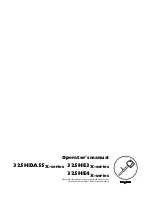
EN
20
b) Batteries (battery pack or batteries installed) shall not be exposed to excessive heat
such as sunshine, fire or the like. Protect from mechanical shock. Keep dry and clean
Keep away from children.
c) Do not open, dismantle, shred or short-circuit batteries. Do not mix old and
new batteries.
d) Dispose of properly. Pay attention to environmental aspects of battery disposal. Do
not dispose of in household waste.
e) Refer to safety and other instructions on the battery or its packaging.
f) In case of battery leakage, remove the batteries and clean the battery compartment
thoroughly. Avoid contact with skin and eyes.
The following information applies to professional users only but is good practice for all
users:
ADDITIONAL SAFETY WARNINGS FOR CONSTRUCTION DUST
The updated Control of Substances Hazardous to Health Regulations 1st October 2012
now also targets to reduce the risks associated with silica, wood and gypsum dusts.
Construction workers are one of the at-risk groups within this because of the dust that
they breathe: silica dust is not just a nuisance; it is a real risk to your lungs!
Silica is a natural mineral present in large amounts in things like sand, sandstone and
granite. It is also commonly found in many construction materials such as concrete and
mortar. The silica is broken into very fine dust (also known as Respirable Crystalline
Silica or RCS) during many common tasks such as cutting, drilling and grinding.
Breathing in very fine particles of crystalline silica can lead to the development of:
• lung cancer
• Silicosis
• Chronic obstructive pulmonary disease (COPD).
And breathing in fine particles of wood dust can lead to the development of Asthma.
The risk of lung disease is linked to people who regularly breathe construction dust
over a period of time, not on the odd occasion.
To protect the lung, the COSHH Regulations sets a limit on the amount of these dusts
that you can breathe (called a Workplace Exposure Limit or WEL) when averaged over
a normal working day. These limits are not a large amount of dust: when compared to
a penny it is tiny – like a small pinch of salt:
This limit is the legal maximum; the most you can breathe after the right controls have
been used.
How to reduce the amount of dust?
1. Reduce the amount of cutting by using the best sizes of building products.
2. Use a less powerful tool e.g. a block cutter instead of angle grinder.
3. Using a different method of work altogether – e.g. using a nail gun to direct fasten
cable trays instead of drilling hole first.
Please always work with approved safety equipment, such as those dust masks that
specially designed to filter out microscopic particles and use the dust extraction facility
at all time.
















































